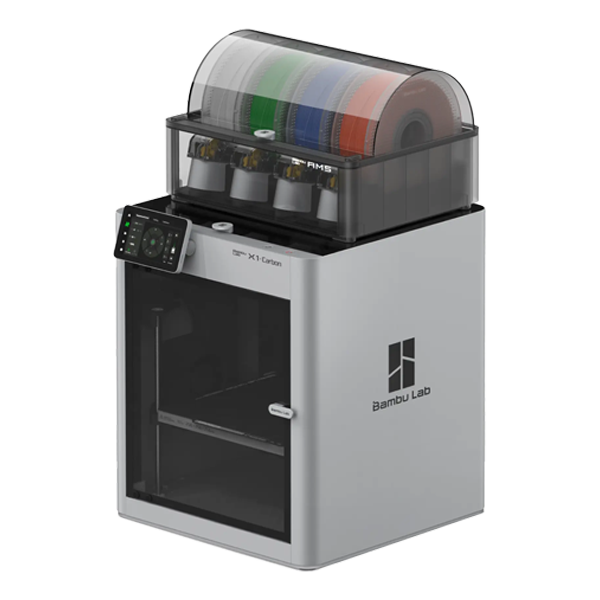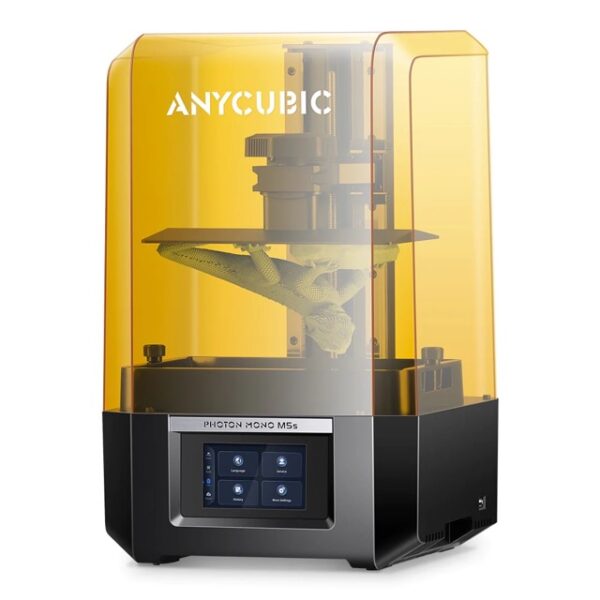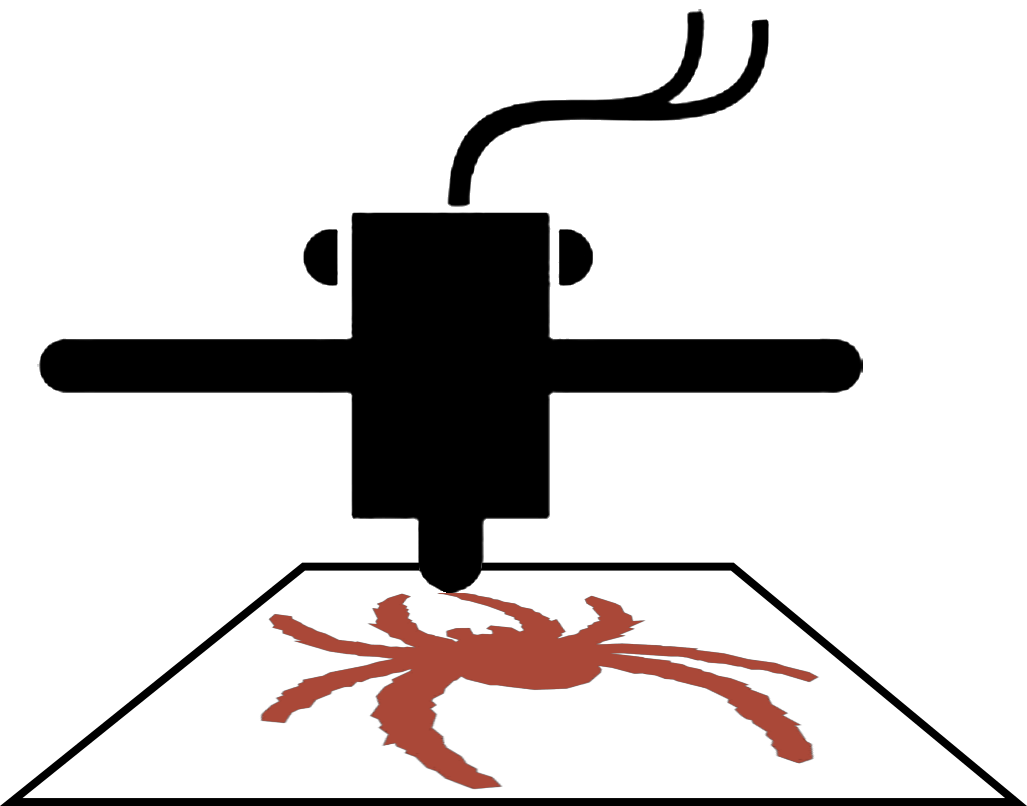As of 2018, there are two 3D printers available to assist collaborations with faculty on developing 3D printing for research and scholarship needs.
 Bambu x1 Carbon Combo Printer (acquired in 2024)
Bambu x1 Carbon Combo Printer (acquired in 2024)
The Bambu X1 Carbon (X1C) is an FDM printer as it uses plastic filament on a spool to feed the printer, melting it and positioning the molten plastic where it is needed to print one layer of an object. The print bed then lowers a small fraction of an inch in order to print the next layer. The bed lowers again, and the printing process is repeated until the entire object has been printed. One advantage of the X1C over most FDM printers is that this printer comes with an AMS attachment that allows printing a single part with up to 4 different filaments. They could be different materials and/or different colors.
Since there is only one filament extruder, the AMS handles feeding a new filament whenever it’s needed, purging the extruder with the new filament, and continuing the print job. This gallery has some of the initial fun and functional test prints made with this printer.
 Anycubic M5S (acquired in 2023)
Anycubic M5S (acquired in 2023)
The Anycubic Photon Mono M5S printer is the newest printer in IS, and it operates with a vat of liquid resin in which a print bed lowers into the vat leaving a very small liquid layer between it and the bottom of the tank. Light then hardens the liquid in the areas that become the body of the printed object. The print bed then raises a small fraction of an inch to print the next layer.
Its best feature is that it has a print speed of 105mm/hr, meaning that it can print 4 inches vertically in one hour no matter how complicated the object(s) being printed. Also, it has an amazing resolution being able to print at the resolution of one-fifth the thickness of a human hair. Historically, the cost of SLA liquid resin had been approximately $200 per liter (2018-2024). The resins that are compatible with this printer only cost ~$70 per liter (as of March 2024), bringing the consumable cost into the same ballpark as plastic filament printers.
Past 3D Printers
Formerly, the CTLT operated a few generations of 3D printers including a Makerbot Thing-O-Matic, a Solidoodle 2, a Solidoodle 3, and a 3D Systems 460 Plus. The 3D Systems 460 Plus had continued to be supported until 2017 by the TLC after a reorganization process moved the TLC outside of the CTLT. Further, IS operated a Form 2 SLA printer for 5 years until it suffered major servo-mechanical failures and an Ultimaker 3 FDM printer for 8 years until its print head assembly finally failed after approximately 725 print jobs.
